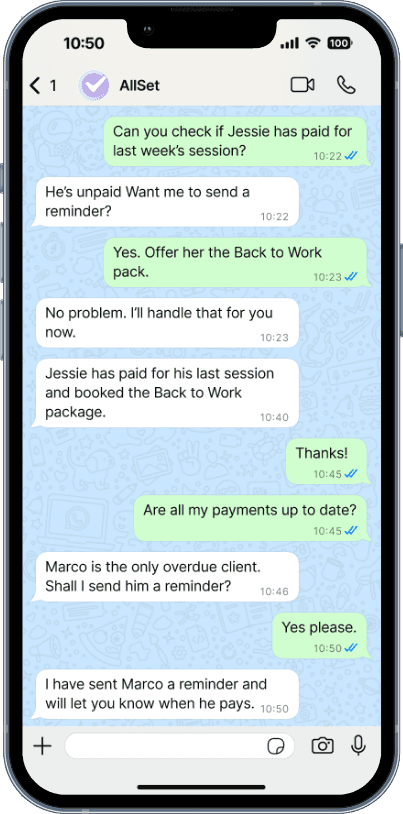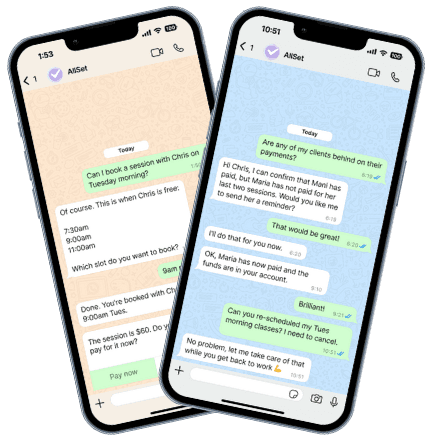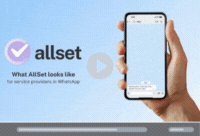That shift matters because it reframes the leadership question. It is no longer about tools; it is about design. What habits do we want learners to build? What judgments do we want to see? And how will we help new graduates show up in their first months of real work?
From our work with academies, training centres and vocational colleges, three patterns keep proving themselves:
Teach with AI in the open.
Assess applied judgment.
Operate early careers with reliable AI support.
Learn with AI in the open
Students already use AI to plan, practise and check understanding. The helpful move is structured visibility; in other words inviting responsible use and asking for light documentation so you can see their thinking. Because nothing demonstrates learning better than when learners use their own words.
What we have observed working in the wild is simple. Pair AI with a plan → retrieve → reflect loop. Let AI models help produce practice items and varied scenarios, then have the learner show what changed in their understanding. You may consider adding a short AI use note with each assignment, with inputs like: Prompts I used, Key change in my understanding, What remains uncertain, Sources I consulted.
These notes become evidence you can grade and also coach better conversations between learners and tutors.
Assess for applied judgment
If generative AI can complete the task convincingly, begs the question: is it the wrong task? If it’s a fait a compli that students will find a way to use AI in assessment, perhaps it’s better to measure than to just “catch”.
An example pattern you can adopt without turning the ship:
Variant scenario. Rotate constraints so success requires adaptation, not recall
Micro-viva. A quick 3 to 5 minute oral check that asks for one decision in the learner’s own words
Evidence log. Show sources used, how they were weighed and what changed during the work
These are light, easy to pilot and strong enough to change behaviour. You will hear the trade-offs a learner made and the risks they saw. You will also see where a model was used well, which is not a problem. It is part of the world your graduates enter.
Turn skill into income after certification
Learning does not stop at graduation. It is the moment graduates enter a market that already runs on AI. The post-cert edge will not come from another booking app or payments portal. It will come from conversational AI as the operating layer where demand is created, commitments are kept and cash moves.
The reality is plain. Early careers fail quietly in admin. Missed confirmations. Loose reschedules. Slow cash. No recovery. Clients live in messages. Friction anywhere else taxes momentum. If you cannot evidence operations, your reputation is borrowed not earned.
At AllSet we know that when AI runs operations, four shifts happen:
From reminders to reliability. Agents negotiate time, manage risk and secure payment in real time
From diaries to utilisation. Capacity is an asset and AI balances it like one
From portals to presence. Work happens where people already are, so the layer gets used
From anecdotes to proof. Four signals become your ledger of outcomes: session completion, recovery of late cancels, payment speed and utilisation at 30, 60 and 90 days
This is why we recommend teaching conversational AI inside colleges’ business ops modules. When a new personal trainer can offer slots, confirm, backfill a late cancel and take a deposit in the same thread, they build momentum before habits harden. When a graduate stylist can fill weekday gaps with time-boxed offers that match slot length and processing windows, deposits normalise and rebook becomes rhythm, not pleading.
Treat operations as part of curriculum and momentum becomes a design choice, not a lucky break.
Checklist: What to consider this term
If you want a place to start, here are three light moves that spark progress without creating a programme you cannot carry.
Publish AI usage norms for learning. Share exemplars of strong AI notes and add reflection prompts to a few core modules
Redesign one high-stakes assessment. Apply the variant scenario, micro-viva and evidence log pattern and tune the rubric toward judgment over presentation
Talk to us about a 90-day conversational AI program for new grads. Deploy your own bespoke AI agent into grads’ chat thread; the same place they are organising their business and clients.
A post-cert edge for colleges and students
Academies and vocational colleges that embrace this way of working outperform on learner experience and employer trust. They can publish cohort outcomes with confidence. They attract stronger applicants and better partners. Not because they used more tools but because they designed for the world their graduates enter.




















